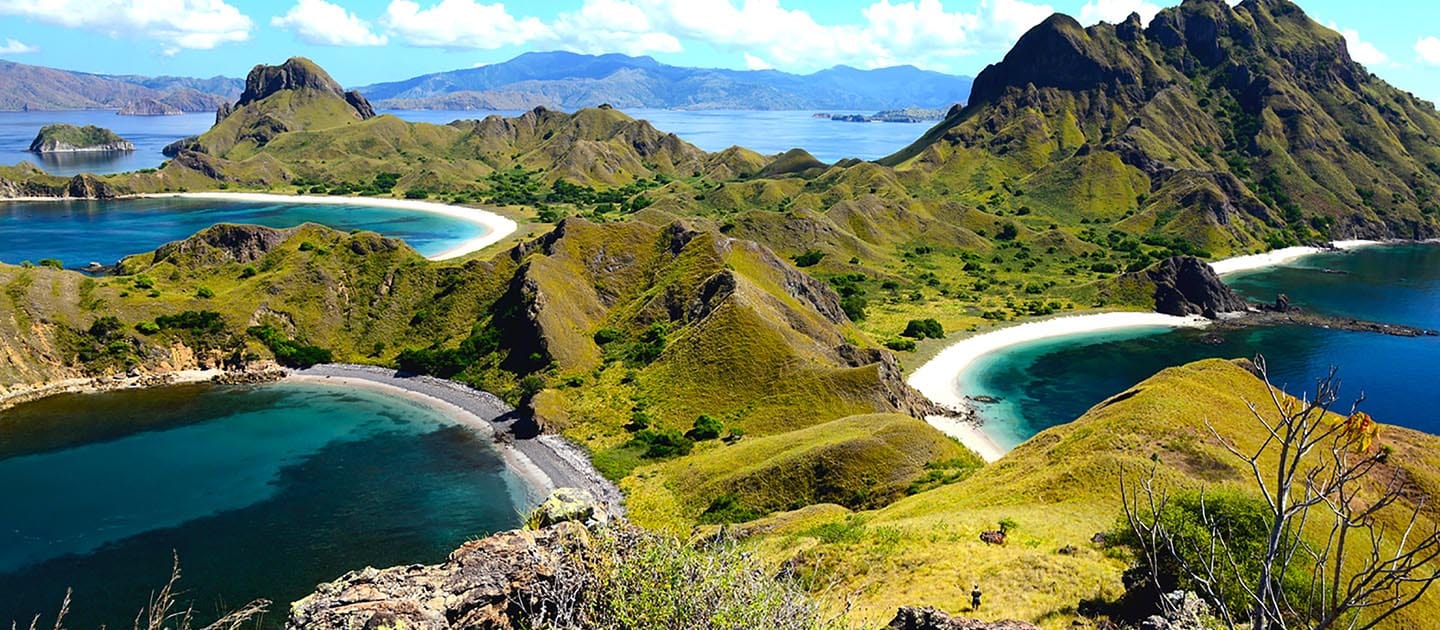Padar Island is the third-largest island in the Komodo National Park. It is located in the south-central of the park, between Komodo and Rinca Island.
Padar is mostly savannah-covered, surreal landscape fringed by bright green-capped mountains of fairy-tale shapes. It’s all surrounded by three turquoise bays, and curiously, each one of the bays’ beaches has different colored sand: One is pearly white, another charcoal black, and a third is a very rare baby pink. It is a rare combination, a quirk of this unique island.
The black-sanded beach has a volcanic origin, composed of various dark minerals. The pink, one of a few in the world, has pulverized red coral mixed with white sand. And the white one, in almost any other setting, would be a spectacular find. Here, it almost plays the third fiddle.
Padar is home to a remarkable array of wildlife, especially for its size. There are six species of shark, and two of manta rays, and many different reptiles. There once were three kinds of Komodo dragons here.
Along with the illegal hunting activities by a human being, they are slowly disappeared and almost unable to see them anymore, even once. The cause is simply because of the lack of foods, like deer and wild boar. Their extinction can be because they just died alone without any food to eat or prolonged hunger or they can be migrated to the nearest island, Rinca. Nowadays, the island remains empty with no dragons. However, other wild animals such as wild boars are still around daily.
There are dolphins, the occasional whale, falcons, kites, geckos, and green turtles. And then there are some plain old little mammals, to feed their neighbor predators.
Visitors can do a 30-minute hike to Padar’s summit to see a panoramic view of the island, go trekking for around an hour, snorkel or just hit the pristine tri-colored beaches. Labuan Bajo is the closest city, and there are tours departing daily for one, two, or three-day visits. The best time is from April to November. Bring sunscreen, sunglasses, good hiking shoes, a hat, plenty of water and get ready for some serious 30-foot exercise uphill.


